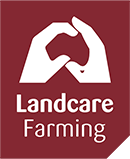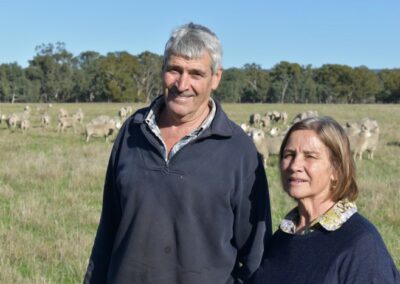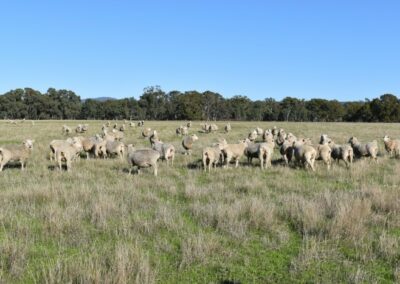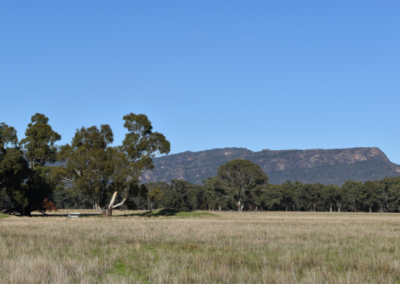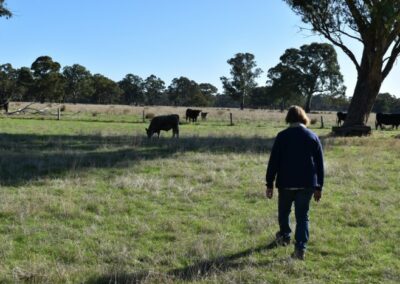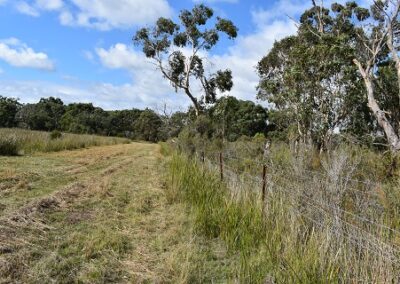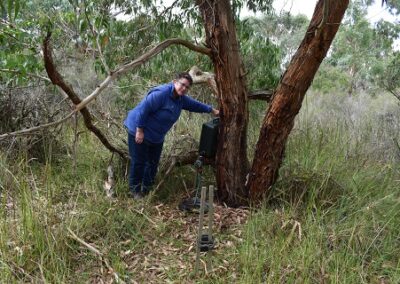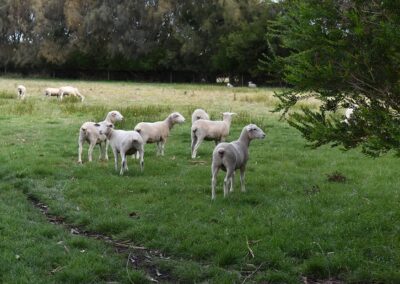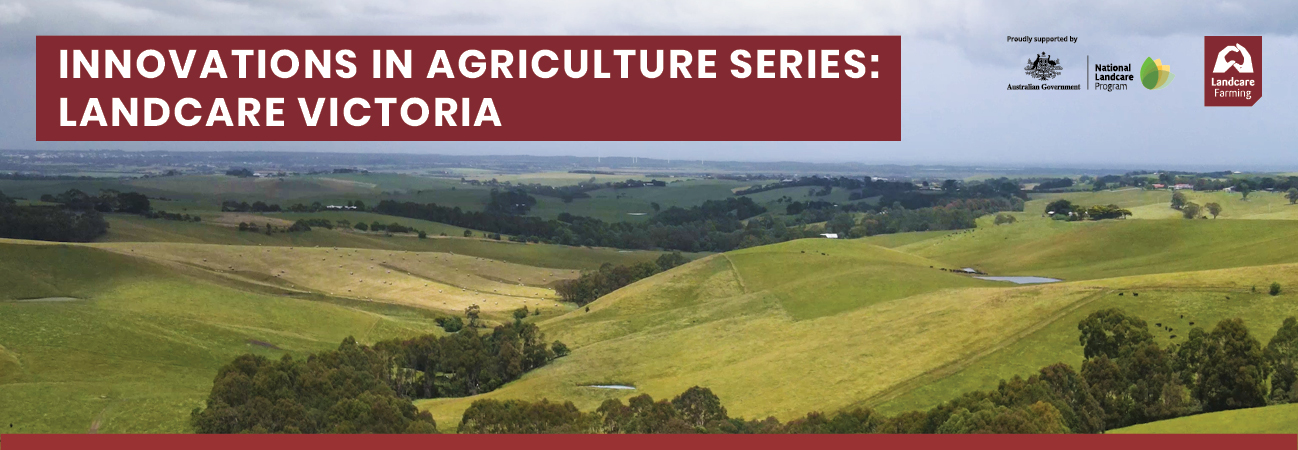
Natural Resource Management Plan leads to biodiversity and profitability gains.
By fencing off waterways, reducing soil erosion, improving groundcover and creating wildlife corridors (biolinks), Victorian sheep and cattle producers Leanne and Peter Jackman have improved biodiversity on their Dadswell Bridge property, which has supported their Responsible Wool Standard certification.
The property has been in the family since 1950, and as second-generation farmers, Leanne and Peter moved to a biodynamic farming system around 20 years ago with the aim of creating a self-sustaining farm through minimal external inputs.
“We had to have a think about the impacts we were having on ourselves and the natural environment and wanted to find a better alternative,” Leanne said. “We try to farm in a way which is as close to nature as possible and allows a balance where nature can still thrive.”
Aligning their biodynamic principles with a Landcare-led approach, Leanne and Peter have focussed on creating healthy soils, encouraging biodiversity and achieving a natural balance in the environment while still maintaining a productive enterprise.
By putting in place a natural resource management plan to protect and improve biodiversity on-farm, supported by ethical stock treatment, the Jackman’s farm has achieved certification under the Responsible Wool Standard, which allows their wool to attract a premium in the marketplace.
Their natural resource management plan involved a number of practice changes, which included:
Fencing off waterways
Peter and Leanne fenced off six kilometres of Mt William Creek frontage along with swampy areas on their farm and replaced stock access to water with troughs filled using solar powered pumps. Since fencing off the creek line, water quality has improved due to an increase in natural revegetation and reduced stock damage to creek banks. To create cooler ecosystems and reduce evaporation, the Jackmans are now working on establishing vegetation on the banks of dams to help retain moisture and support biodiversity.
Reducing soil erosion
The Jackmans have slowed the movement of water across the property to reduce soil erosion. The water was slowed by fencing off vulnerable areas where vegetation was allowed to regenerate and supplemented with new plantings of trees and understory endemic to the area including River Red Gum (Eucalyptus camaldulensis), Buloak (Allocasuarina luehmannii), Native Cranberry Heath (Astroloma humifusum), and Daphne Heath (Brachyloma daphnoides).
Improved groundcover
Grazing is managed to ensure year-round groundcover, to minimise the impacts of weather and support active soil biology. To do this, Leanne and Peter have maintained their cattle numbers, but reduced sheep numbers from 2,500 to 1,600, to meet their goal of maintaining a productive farm while protecting and enhancing the natural environment.
Creating biolinks
The Jackmans have planted more than 10,000 trees, including Drooping Sheoak (Allocasuarina verticillata), Totem Poles (Melaleuca decussata), Black Wattle (Acacia mearnsii), and Heath Tea- tree (Leptospermum myrsinoides), to create wildlife corridors and shelter belts. These plantings support increased biodiversity through the exclusion of stock, as supported by managed rotational grazing, to ensure paddocks always retain a level of ground cover. These plantings provide habitat for natural flora and fauna, while also providing benefits for stock management, such as shelter and protection from adverse weather, as well as improved pasture growth.
Natural regeneration of species endemic to the landscape confirms that Leanne and Peter’s work to improve natural capital on their farm has paid off, and with a focus on data collection and improved genetics, they hope their own practice changes will demonstrate it is possible to improve on-farm biodiversity and meet industry standards while also maintaining a profitable enterprise.
“Markets are increasingly looking for wool that has been produced naturally and sustainably. The wool industry is also actively encouraging biodiversity improvements – it is the way of the future,” said Leanne. “This [Responsible Wool Standard certification] also shows we really look after our animals as well. People want to know where their produce comes from, and they like to feel good about how it is produced. In our experience, many would rather source their produce from environmentally friendly farms. It helps us to not only make better prices for our products, but we are looking after the environment as well.”
This case study was produced as part of the Landcare Farming Innovations in Agriculture Series. Supported by the Australian Government’s National Landcare Program, the Landcare Farming Innovations in Agriculture Series is managed in partnership by Landcare Australia and the National Landcare Network.
More Innovations in Agriculture stories from Landcare Victoria:
- Dung Beetles Cruising the Hume Highway North and South.
- Improving and quantifying on-farm biodiversity creates business benefits
- Planting with Benefits – Bass Coast Biolinks
- Combined business and biodiversity benefits result from transformative whole farm plan

